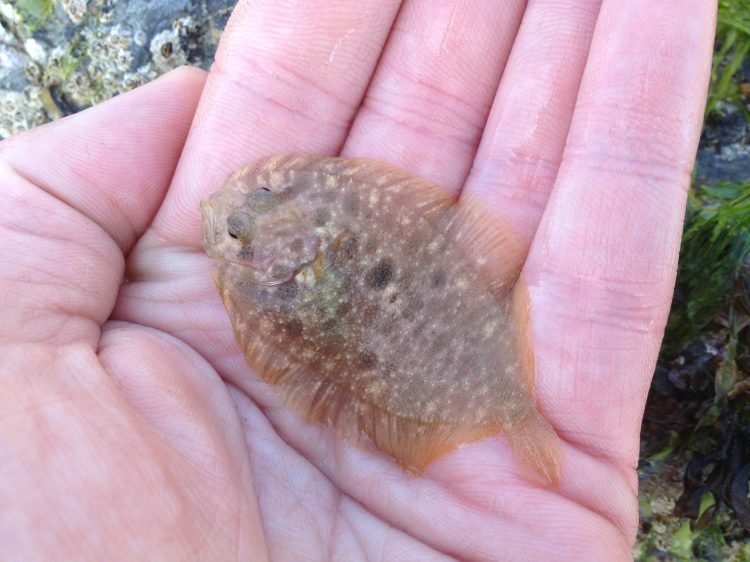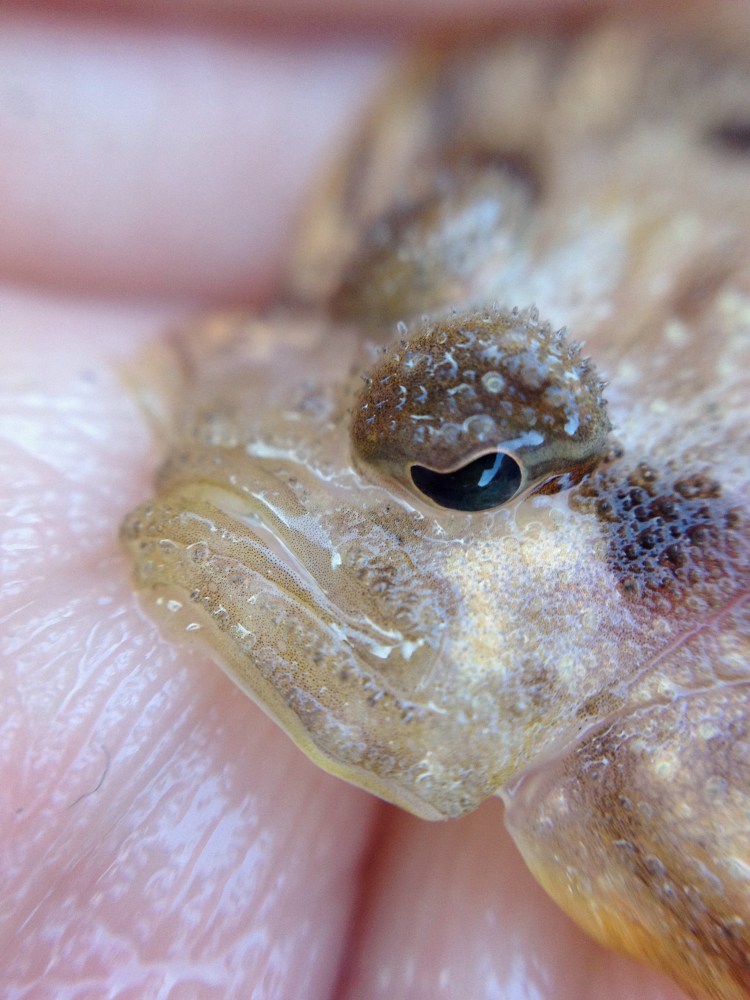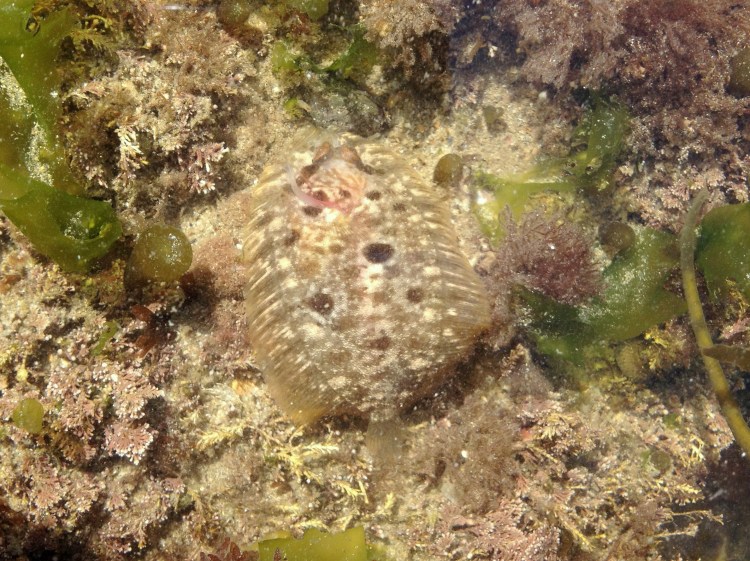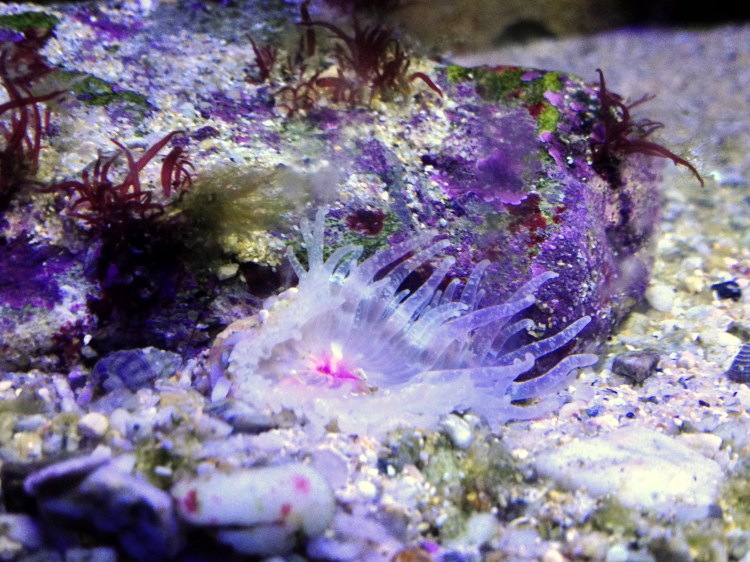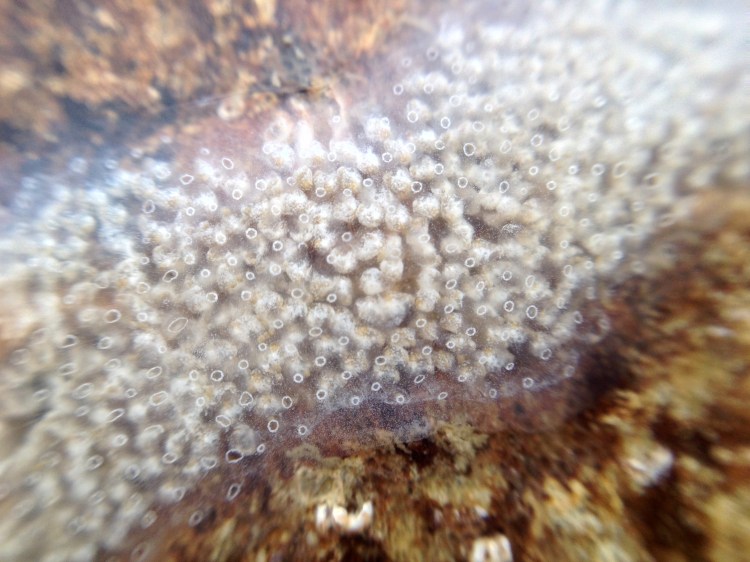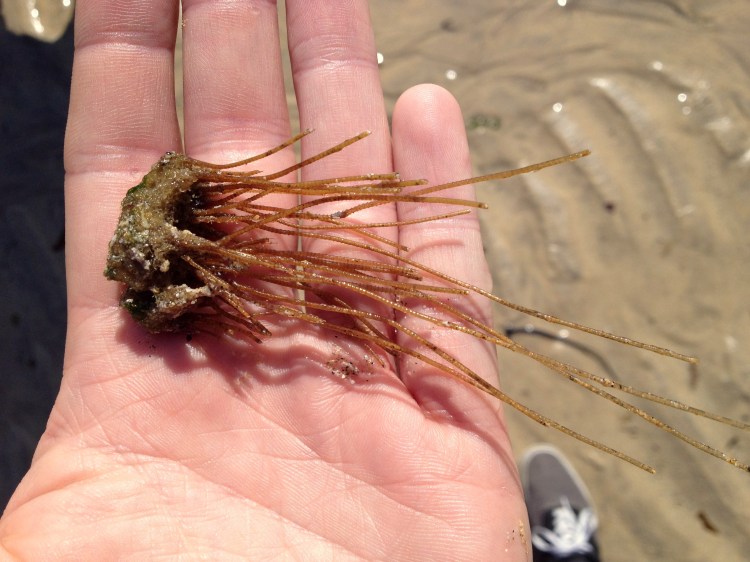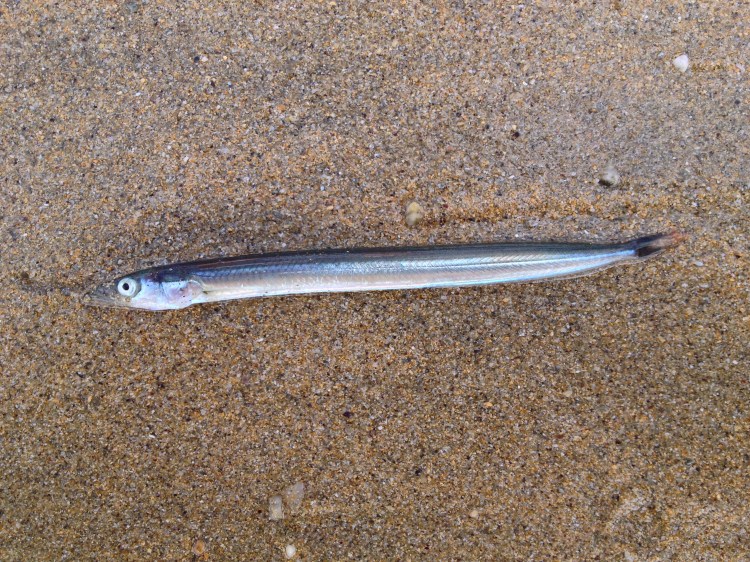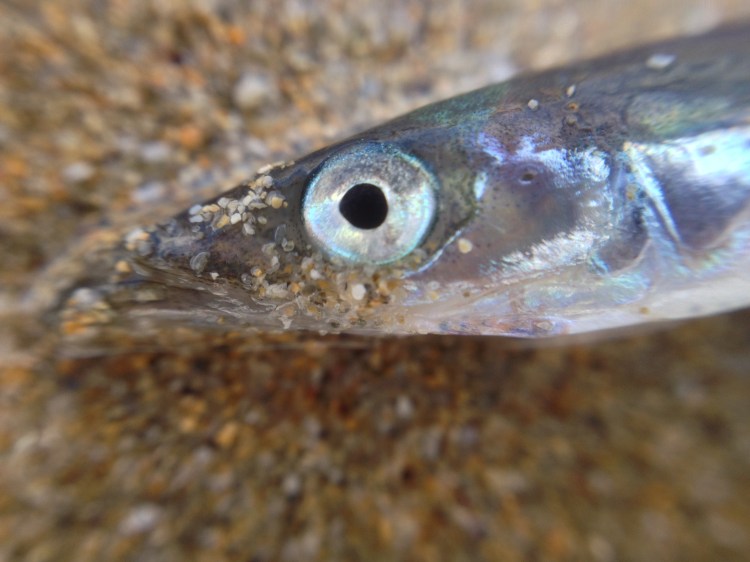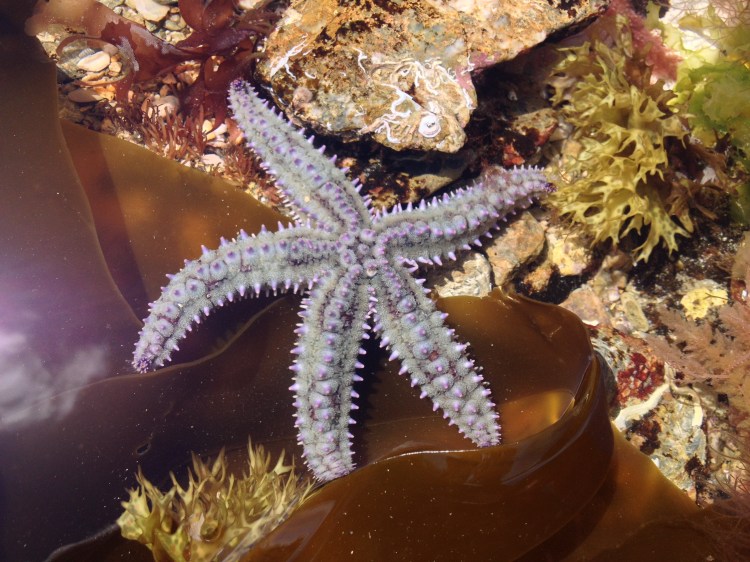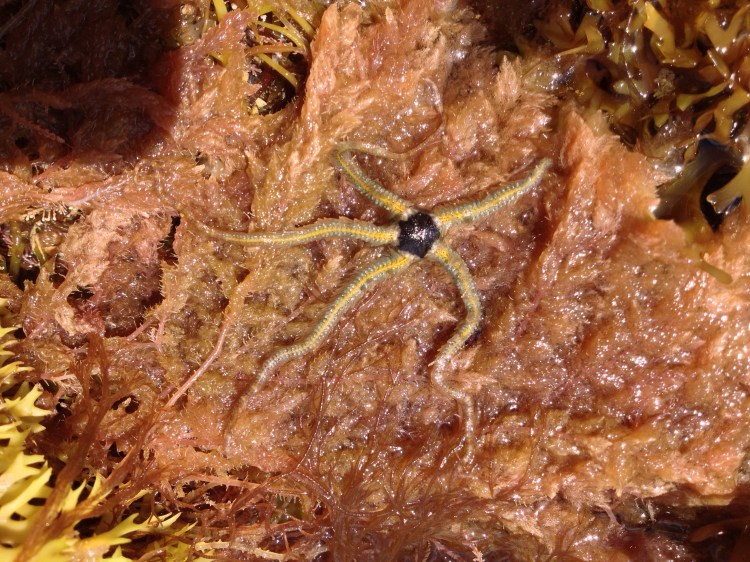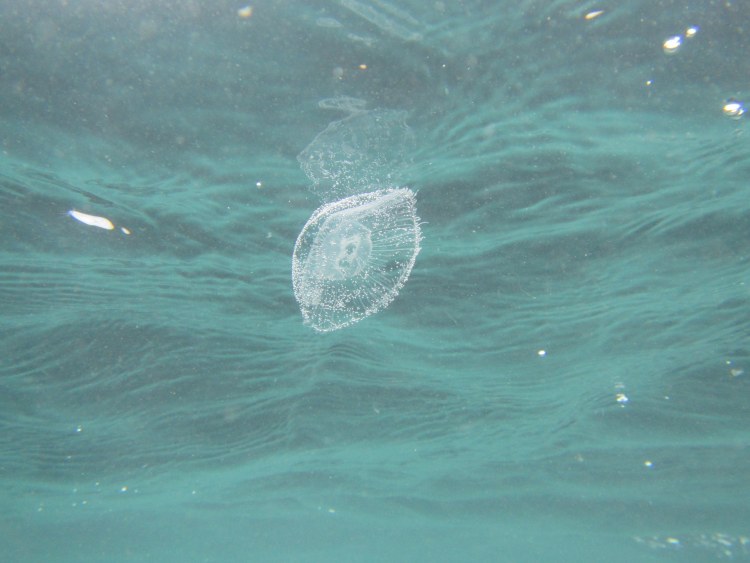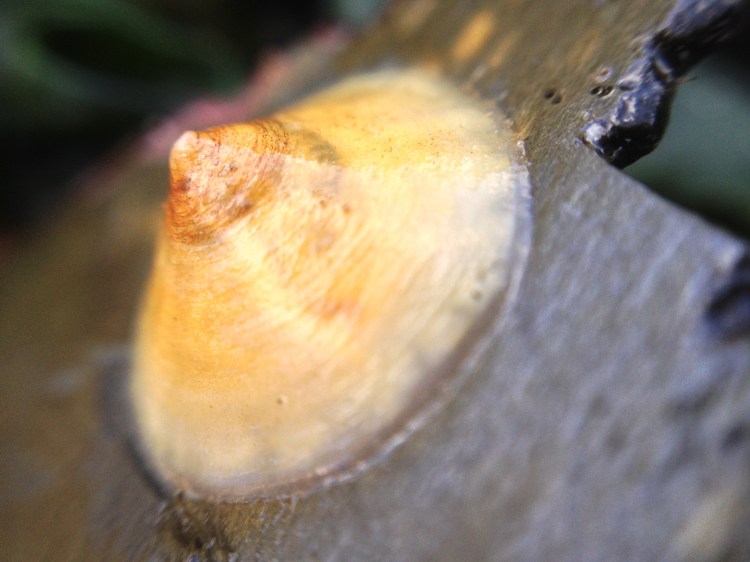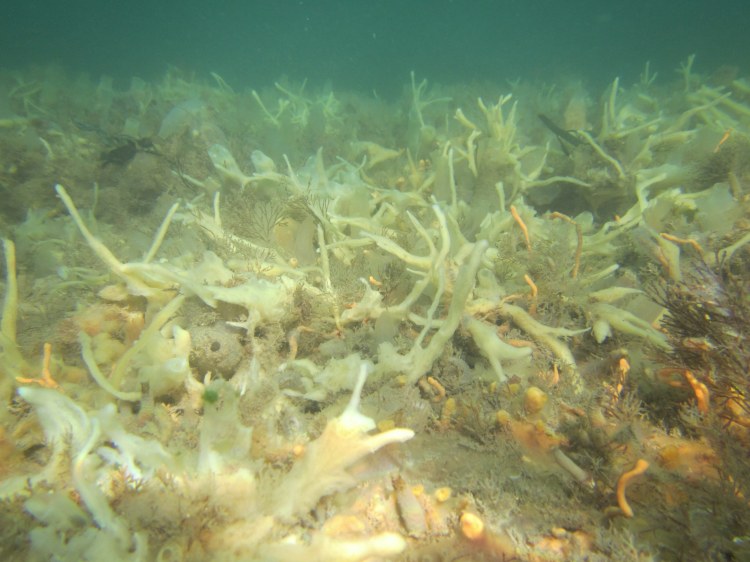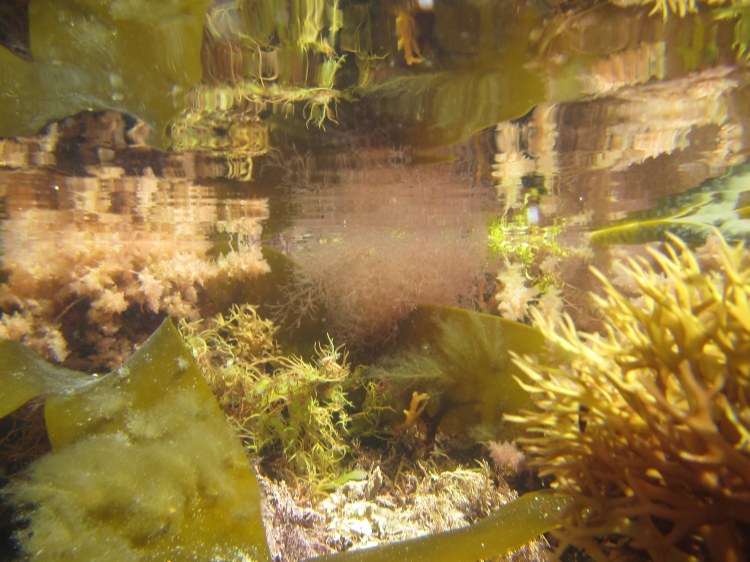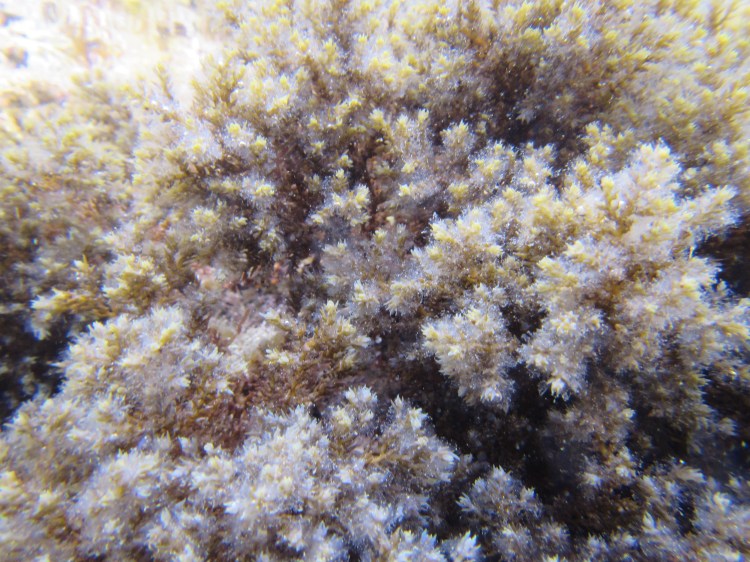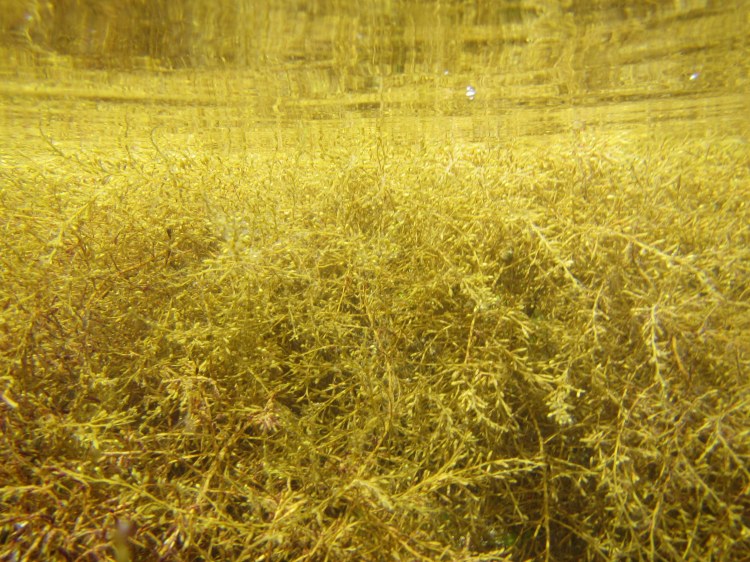 Last month we had a great holiday travelling from San Francisco to Seattle. Nature here is awe-inspiring for the average European; we saw snowcapped volcanoes, giant redwoods, dunes, beaches, mighty rivers and temperate rainforest. This is not the place for a travelogue, however, rock pools were of course checked and that is prime blog material! We had a bit of a happy-go-lucky approach to travelling and I had not checked tide times beforehand. Turns out that the tides on the Pacific West coast work very differently than those in Western Europe: instead of two almost equally low tides a day, there is a proper low tide and a not so low tide, how inconvenient! (This page has a good overview of tide types, including another type with only one low- and one high tide a day.) In the end I had two early mornings on the Oregon coast for rock pooling: Bob’s Creek Wayside south of Yachats (pic above) and Seal Rock north of Waldport (see map). (I actually prefer the more appropiate American term ‘tide pooling’ as of course there are also (freshwater) rock pools that do not experience tides.) The coast in most of Europe is so much more densely populated it is almost strange to see that vast stretches of pristine coastline with hardly any people around, brilliant. Also, the vast amounts of driftwood and logs is almost unseen in Europe, as thewhole continent is pretty much deforested (especially in the UK, my guess is only places like Norway could be comparable in that respect).
Last month we had a great holiday travelling from San Francisco to Seattle. Nature here is awe-inspiring for the average European; we saw snowcapped volcanoes, giant redwoods, dunes, beaches, mighty rivers and temperate rainforest. This is not the place for a travelogue, however, rock pools were of course checked and that is prime blog material! We had a bit of a happy-go-lucky approach to travelling and I had not checked tide times beforehand. Turns out that the tides on the Pacific West coast work very differently than those in Western Europe: instead of two almost equally low tides a day, there is a proper low tide and a not so low tide, how inconvenient! (This page has a good overview of tide types, including another type with only one low- and one high tide a day.) In the end I had two early mornings on the Oregon coast for rock pooling: Bob’s Creek Wayside south of Yachats (pic above) and Seal Rock north of Waldport (see map). (I actually prefer the more appropiate American term ‘tide pooling’ as of course there are also (freshwater) rock pools that do not experience tides.) The coast in most of Europe is so much more densely populated it is almost strange to see that vast stretches of pristine coastline with hardly any people around, brilliant. Also, the vast amounts of driftwood and logs is almost unseen in Europe, as thewhole continent is pretty much deforested (especially in the UK, my guess is only places like Norway could be comparable in that respect).

 Being at the Pacific Northwest tide pools made me feel like a kid in a sweetshop: I could not decide to stick with a beautiful find or try to move on to the next exciting thing. It seemed a bit useless to just start documenting all the different species in the short amount of time I had. Instead I mainly enjoyed just looking around, especially admiring the Green surf anemones Anthopleura xanthogrammica (above). I know this species mainly from the Coldwater Marine Aquarium Owner group on facebook which has many North American members. Although the diversity of animals and seaweeds in the South West of the UK is amazing, I must admit I am always a bit jealous of the critters in Pacific Northwest tanks! The Green surf anemones are not only strikingly coloured and large, but also incredibly common, along with the Aggregating anemone Anthopleura elegantissima forming dense carpets on the rocks, inhabiting gulleys low on the shore to tide pools quite high on the shore.
Being at the Pacific Northwest tide pools made me feel like a kid in a sweetshop: I could not decide to stick with a beautiful find or try to move on to the next exciting thing. It seemed a bit useless to just start documenting all the different species in the short amount of time I had. Instead I mainly enjoyed just looking around, especially admiring the Green surf anemones Anthopleura xanthogrammica (above). I know this species mainly from the Coldwater Marine Aquarium Owner group on facebook which has many North American members. Although the diversity of animals and seaweeds in the South West of the UK is amazing, I must admit I am always a bit jealous of the critters in Pacific Northwest tanks! The Green surf anemones are not only strikingly coloured and large, but also incredibly common, along with the Aggregating anemone Anthopleura elegantissima forming dense carpets on the rocks, inhabiting gulleys low on the shore to tide pools quite high on the shore.
I had taken the plunge and ordered a new camera for this holiday, a Canon G16 with a Fantasea underwater housing (see this post). However, I did feel comfortable with it in its bulky housing yet and so reverted to the more basic Canon powershot D30 and my iPhone for these sessions instead. I saw a couple of the large nudibranchs Hermissenda crassicornis as well as a Janolus fuscus, very pretty. Also below a Lined (or striped) shore crab Pachygrapsus crassipes and an unidentified prawn. Otherwise, most of the photo’s turned out to be not that great; I was just too hasty!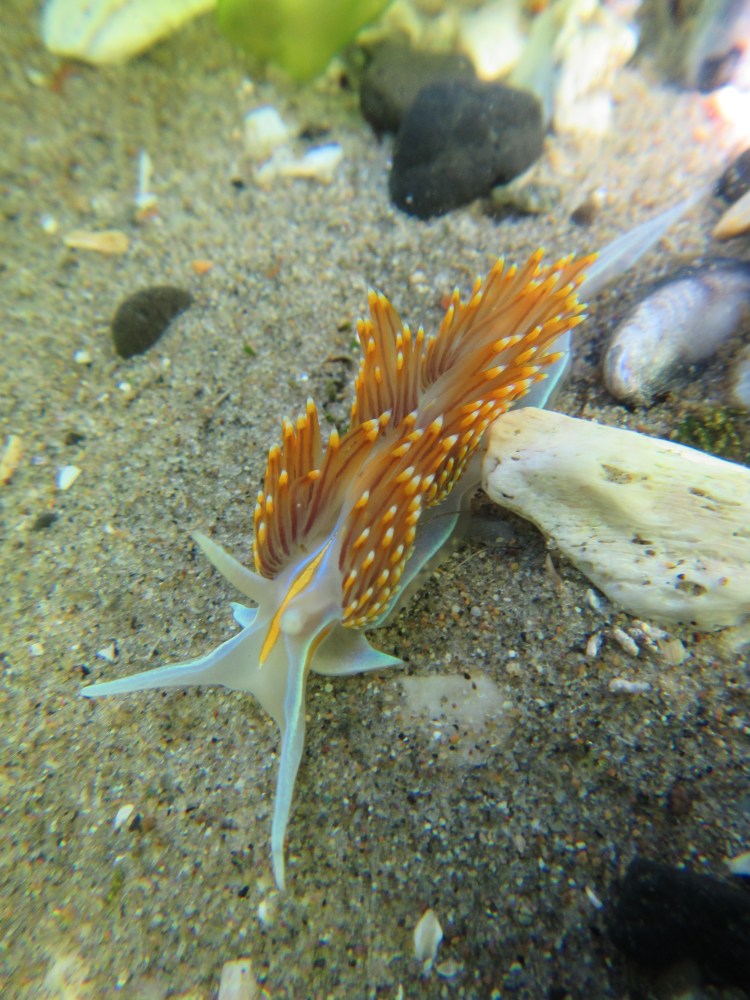

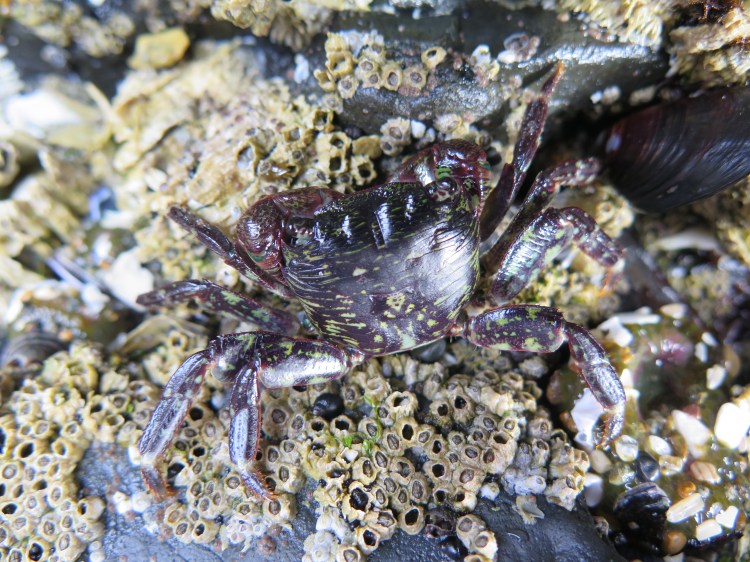
 Although all species were different (except for the Plumose anemones Metridium senile I saw on some pontoons), it was interesting to see the parallels with Cornish rock pools. For instance, all seaweed colours, shapes and textures I knew from home were present here, just in different combinations in each species. There were noticeable differences too. For one, many of the American organisms (chitons, isopods, anemones) are much bigger. The rocks were almost completely covered in barnacles and mussels (again both huge). Seagrass (Phyllospadix) was growing from the rocks!
Although all species were different (except for the Plumose anemones Metridium senile I saw on some pontoons), it was interesting to see the parallels with Cornish rock pools. For instance, all seaweed colours, shapes and textures I knew from home were present here, just in different combinations in each species. There were noticeable differences too. For one, many of the American organisms (chitons, isopods, anemones) are much bigger. The rocks were almost completely covered in barnacles and mussels (again both huge). Seagrass (Phyllospadix) was growing from the rocks!
Two mornings of rock pooling in a three week holiday was not enough, but all that was manageable unfortunately. We however also visited the Oregon Coast Aquarium in Newport on the single rainy day we had and that was pretty good. I am not a big fan of the generic aquarium displays (sharktunnels, ‘nemo’s’, scary Moray eels etc) so it was nice to see mainly coldwater aquaria, especially the nanoaquariums that housed a jumble of sponges, anemones, barnacles, chitons and strange fish, such as one of my favourites, the Grunt sculpin Rhamphocottus richardsonii which camouflages as a giant barnacle (first photo, see also here). A touch pool contained sea cucumbers, huge abalones and the largest chiton species in the world, the Giant Pacific (or Gumboot) chiton Cryptochiton stelleri, humongous! I hope one day to be back in this beautiful part of the world.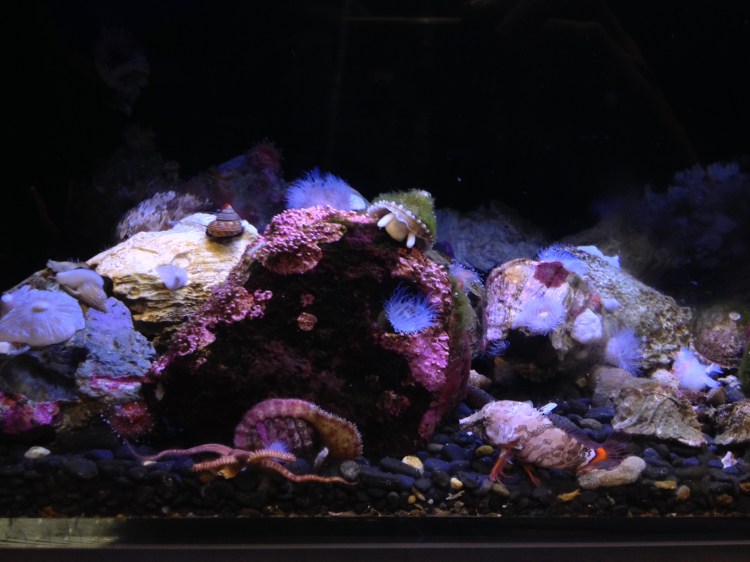

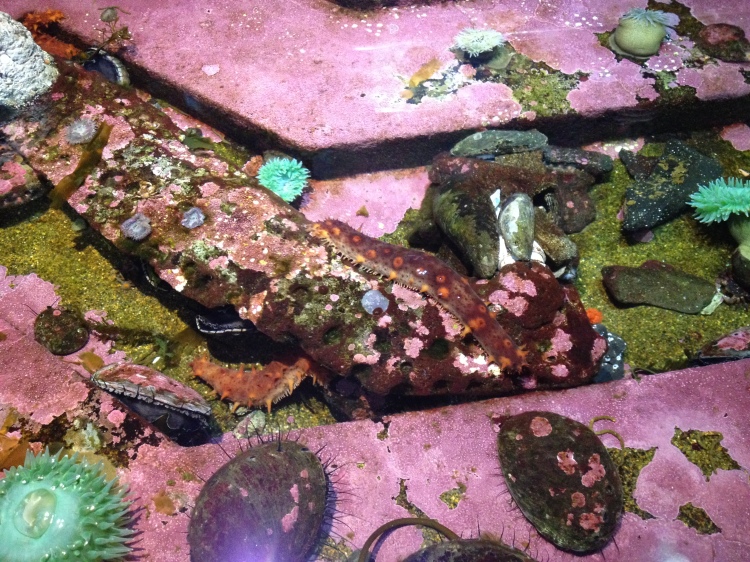
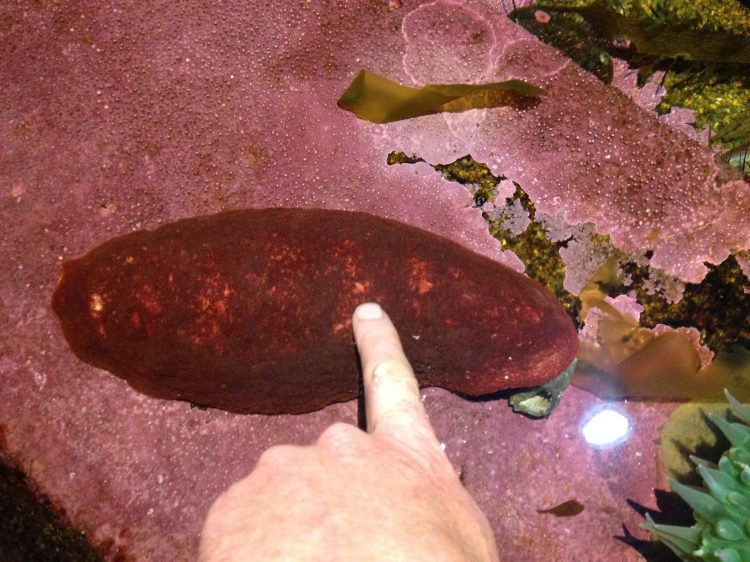


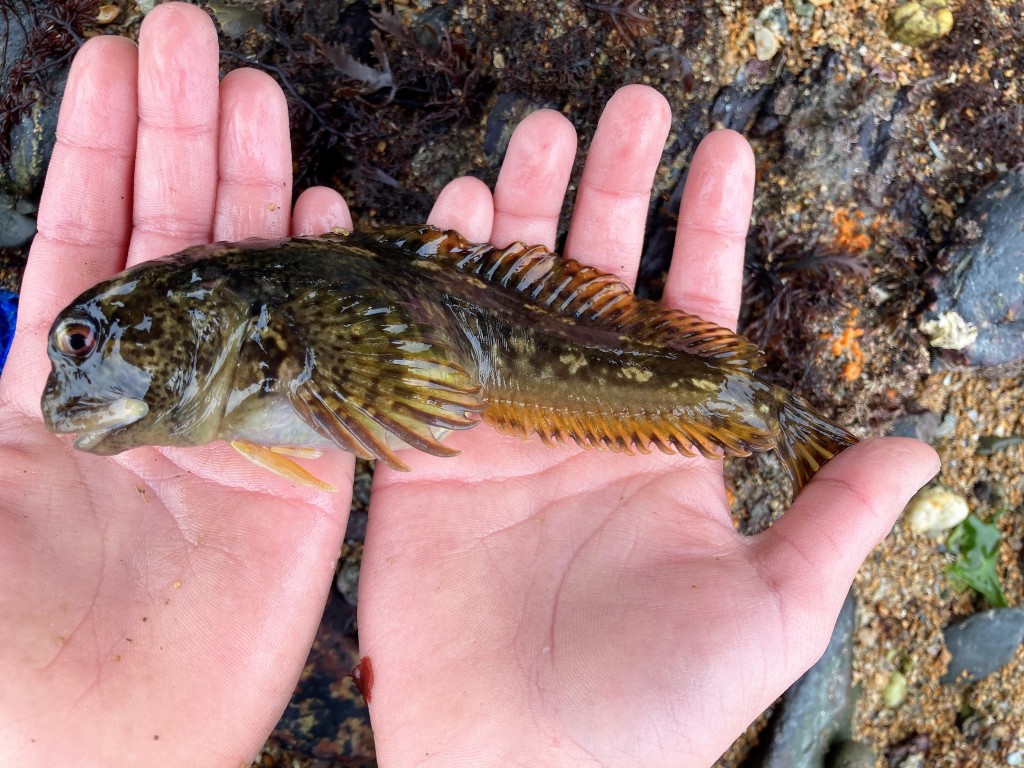
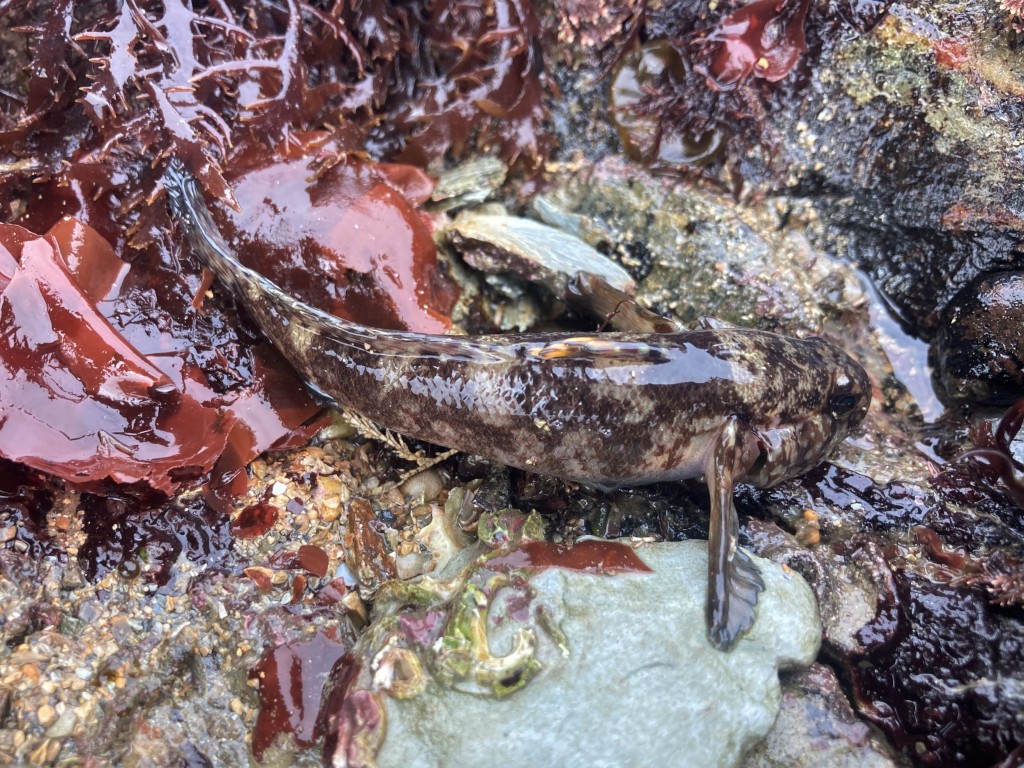


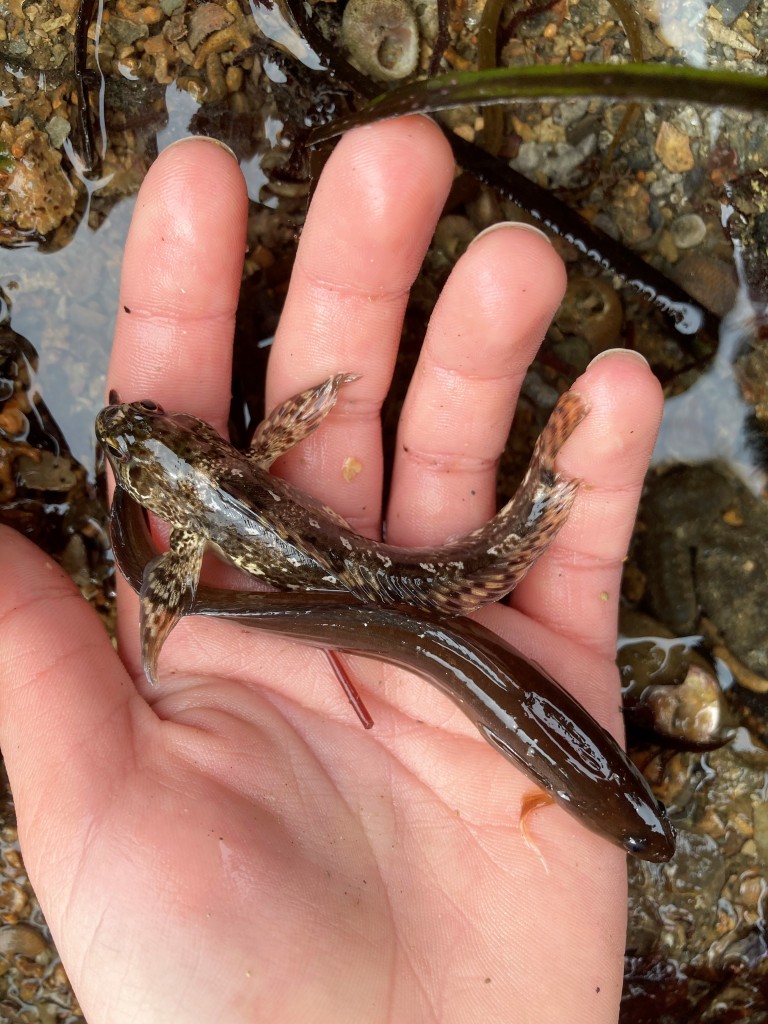
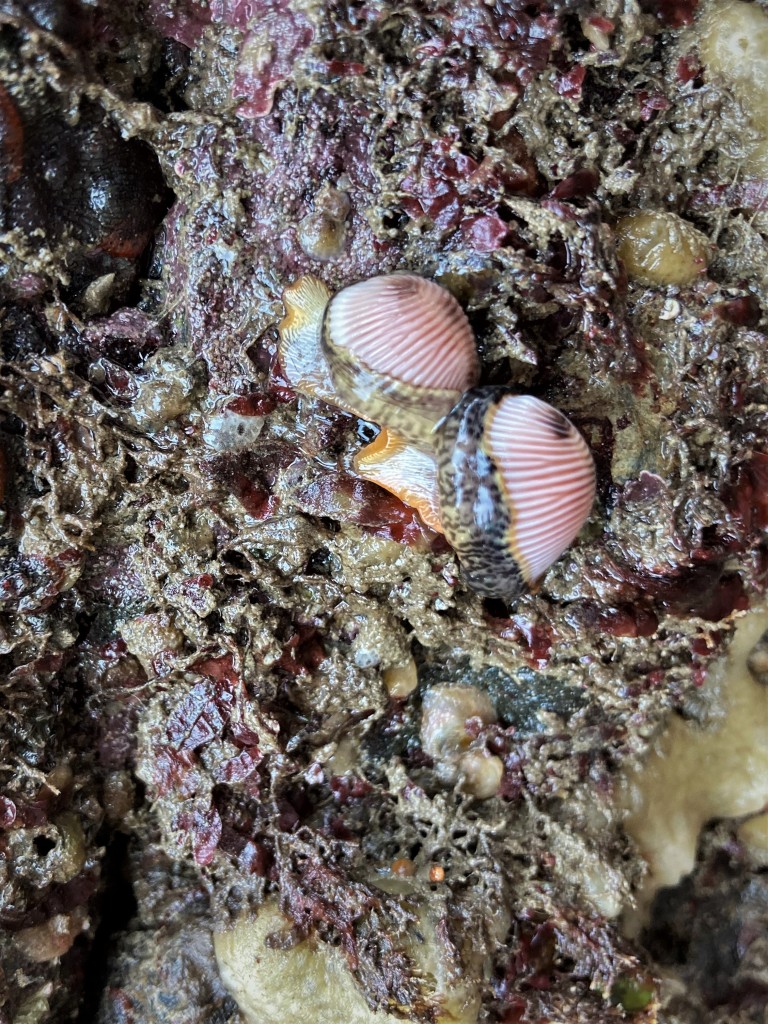




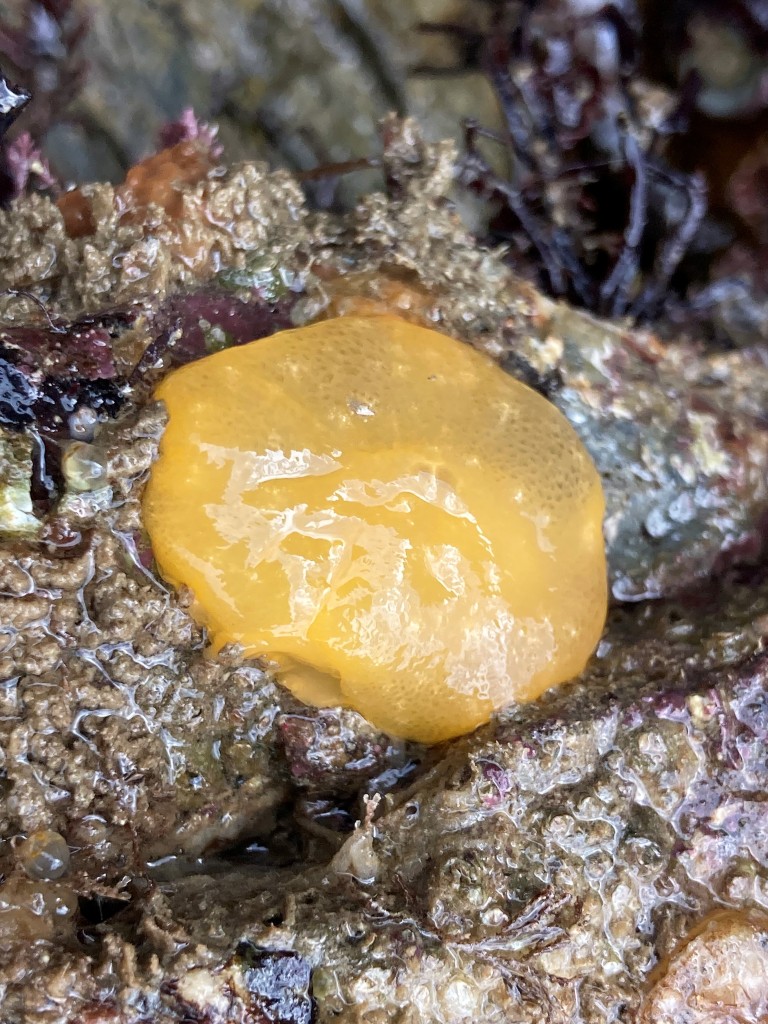






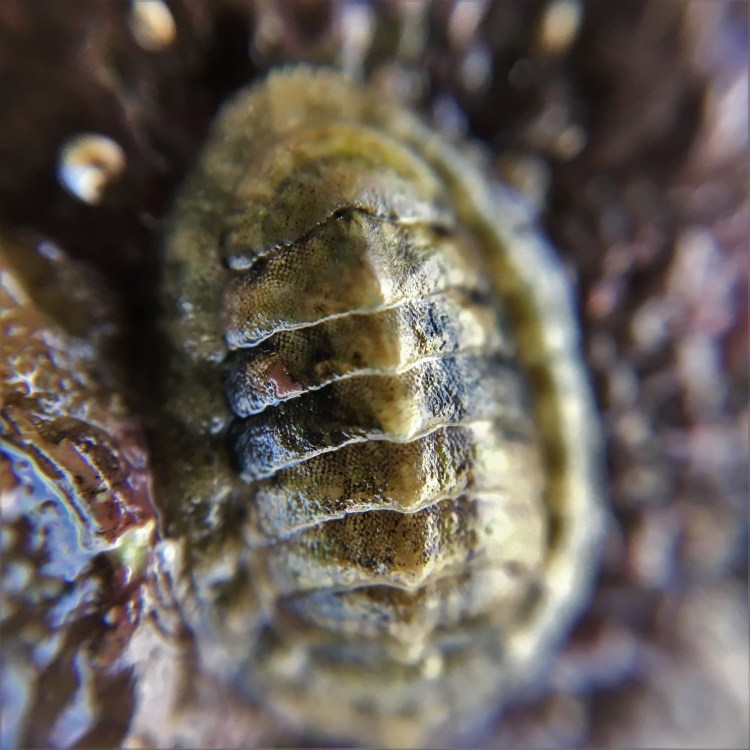
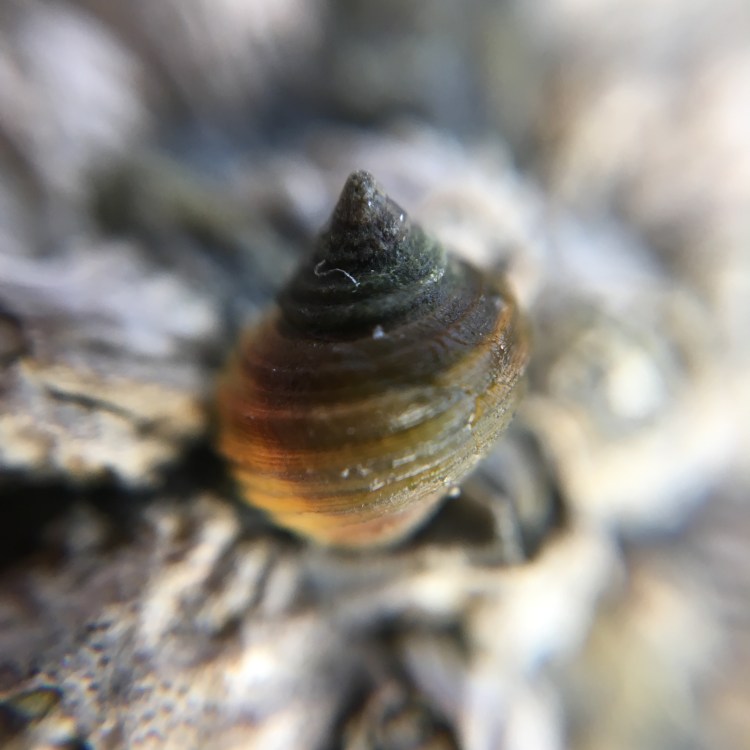

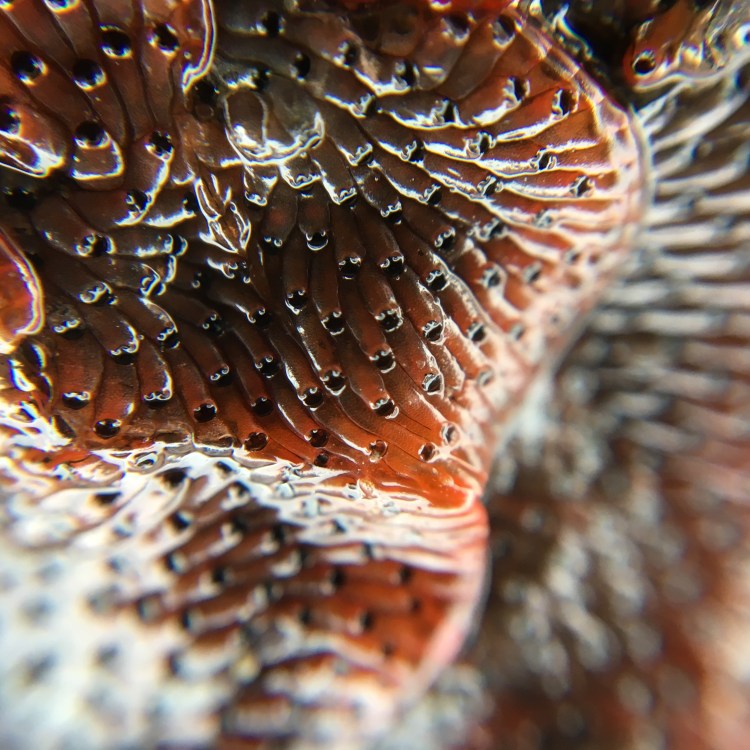
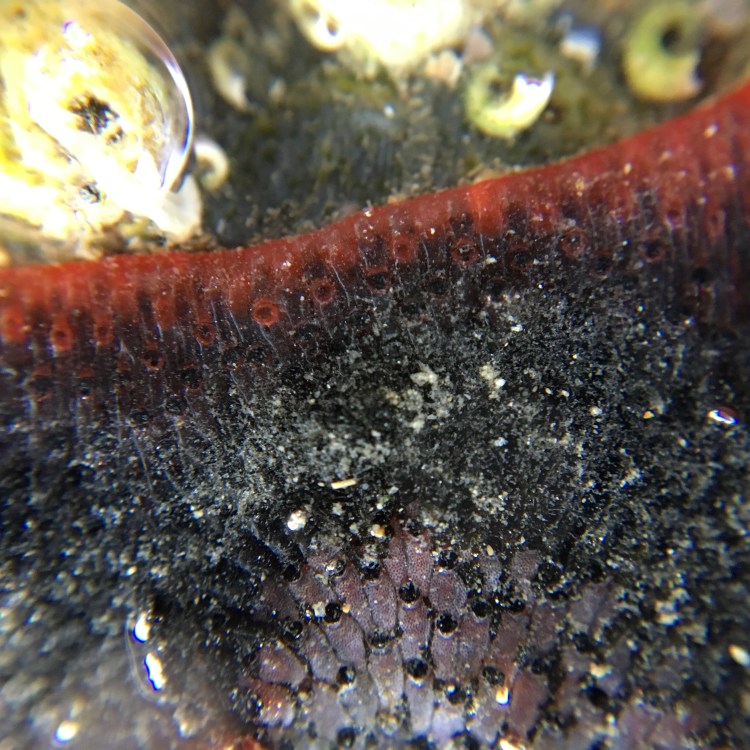

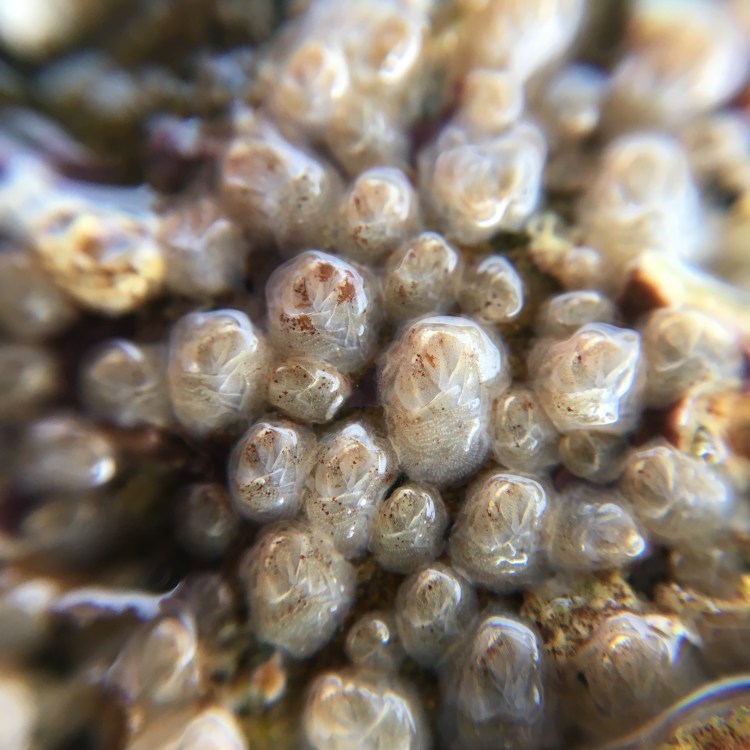
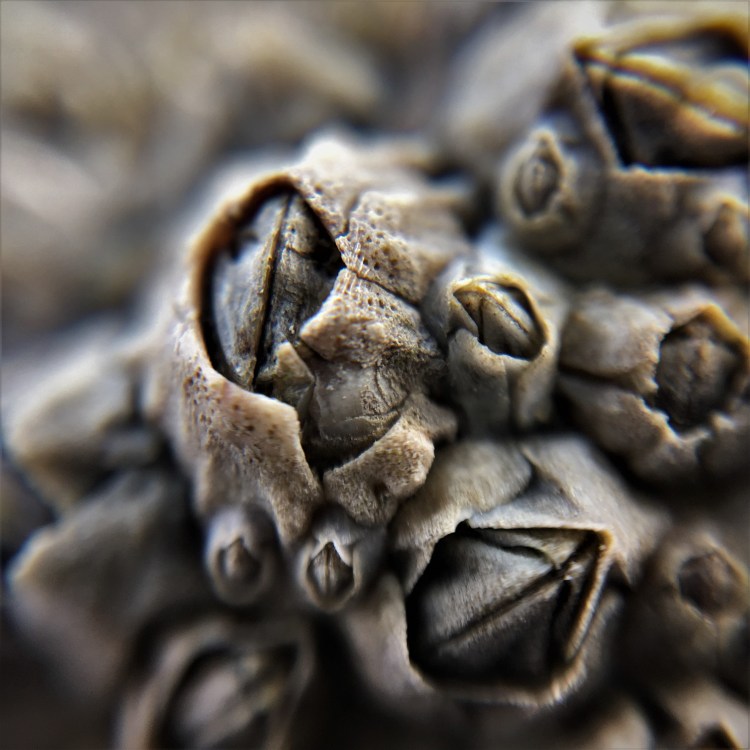
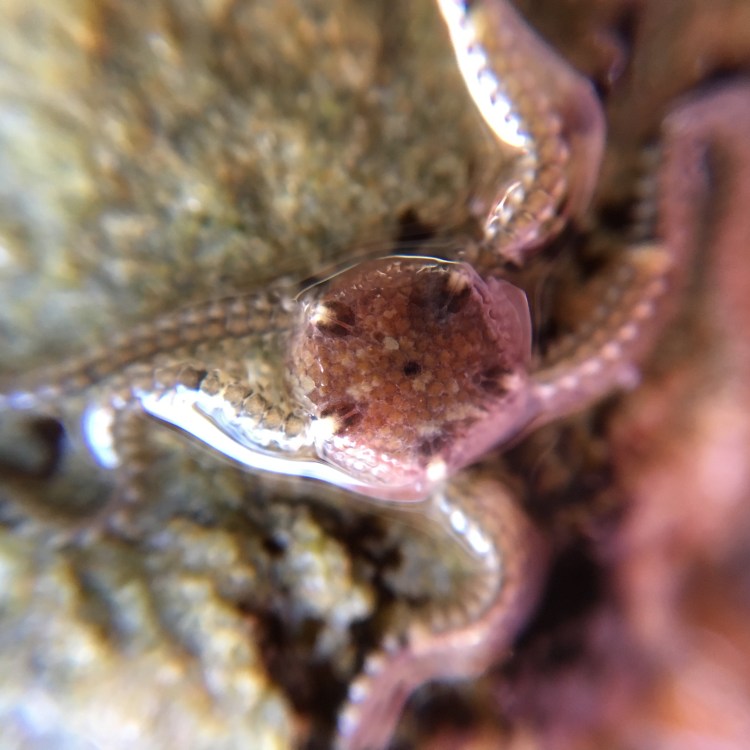

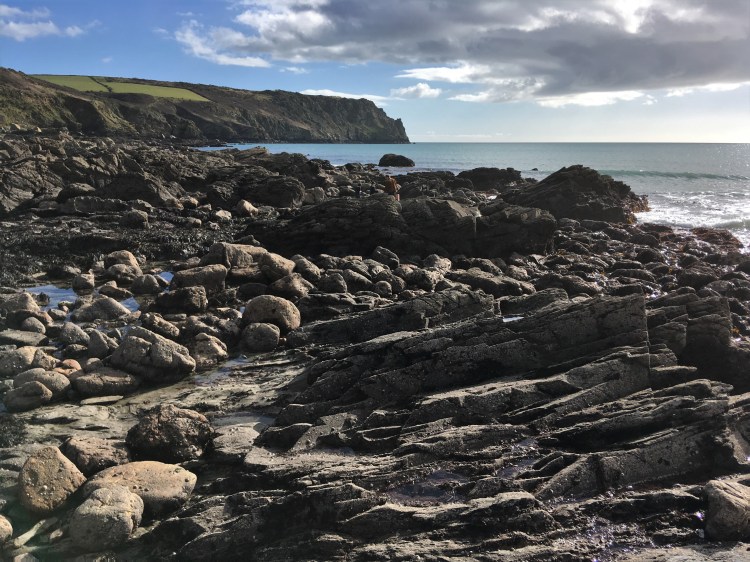


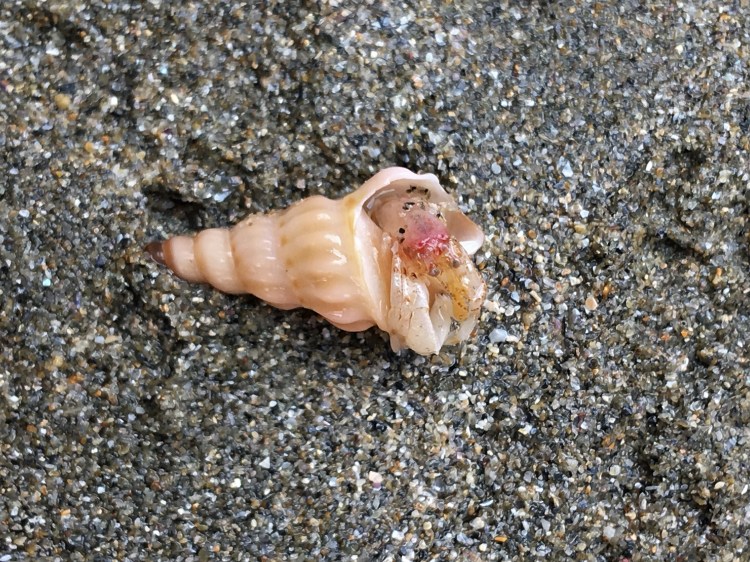
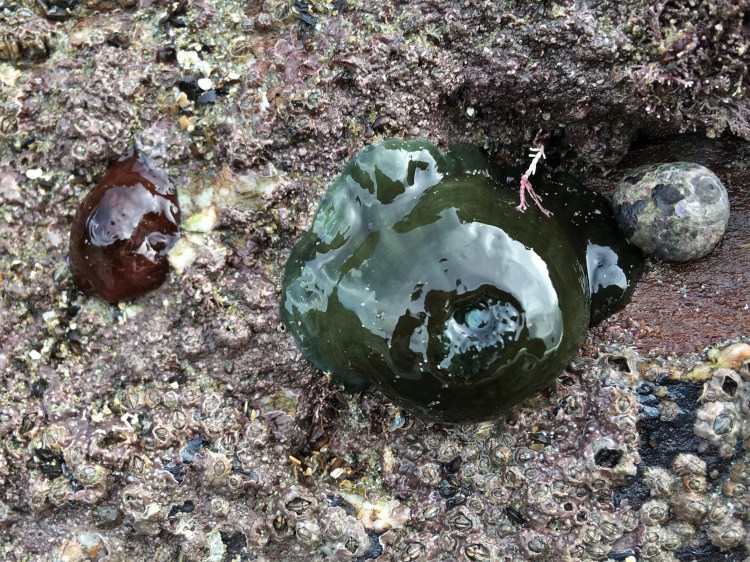

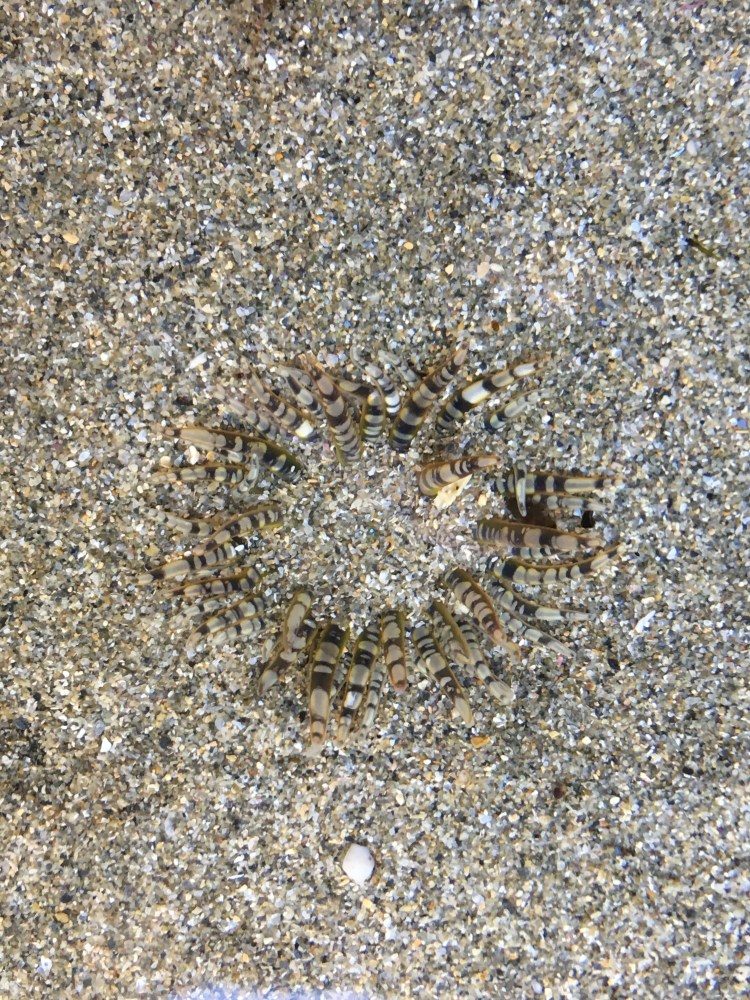

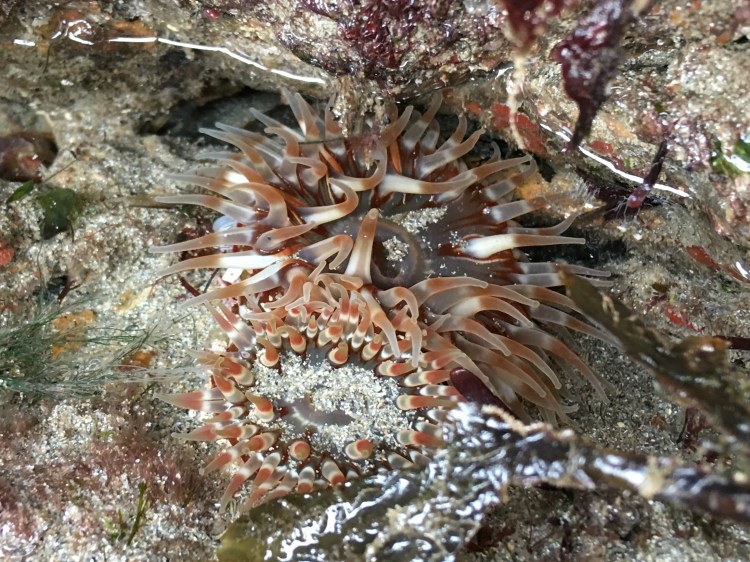

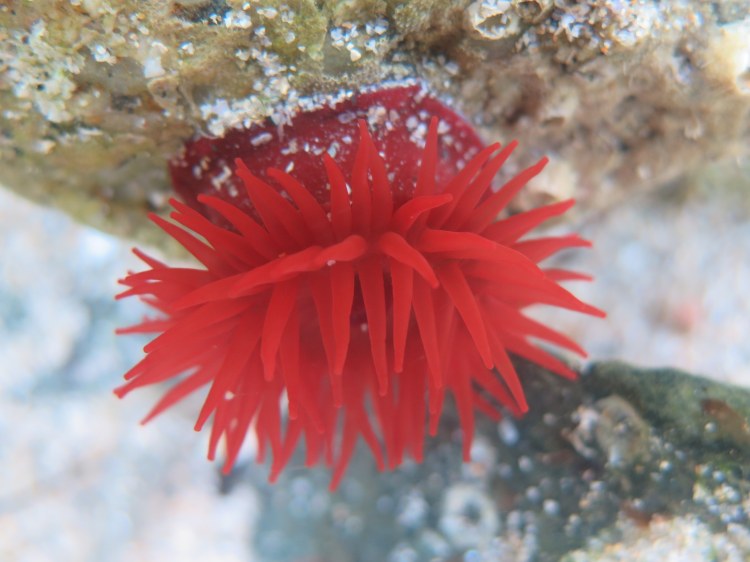
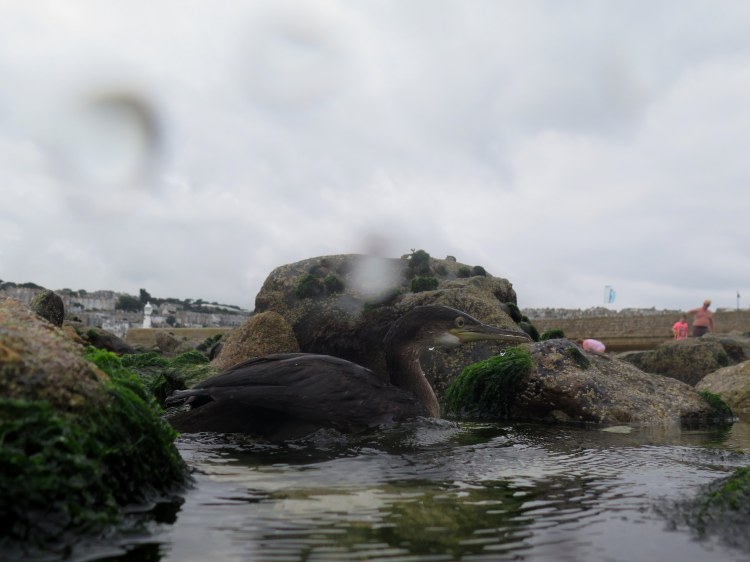


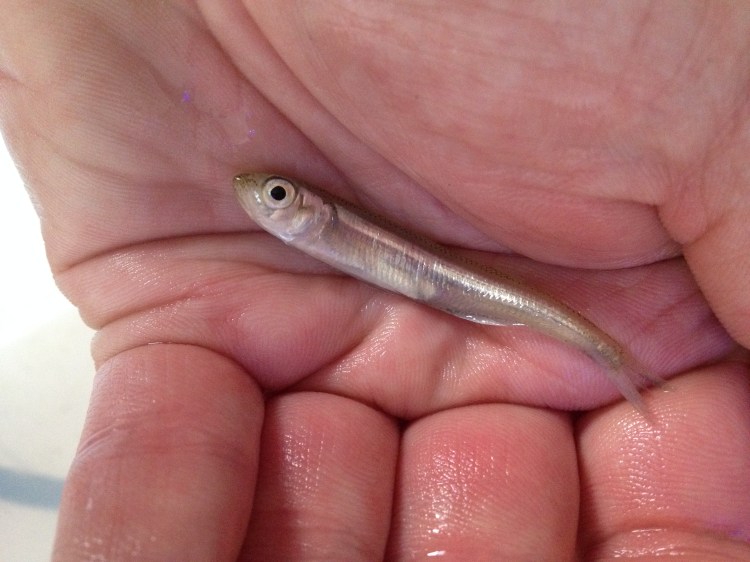


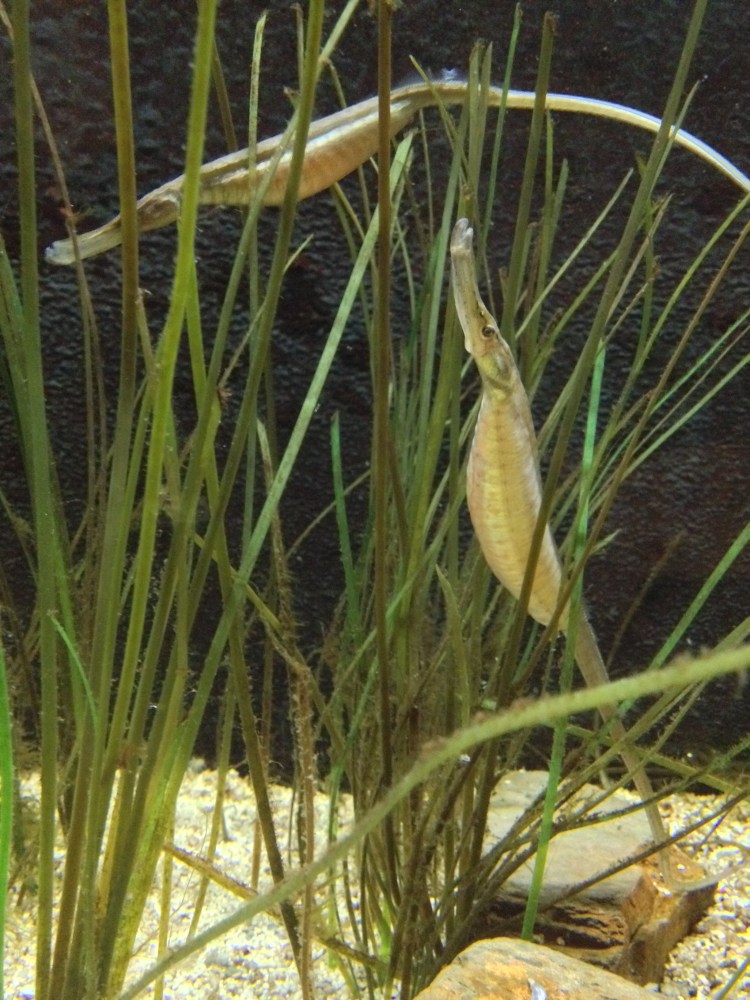
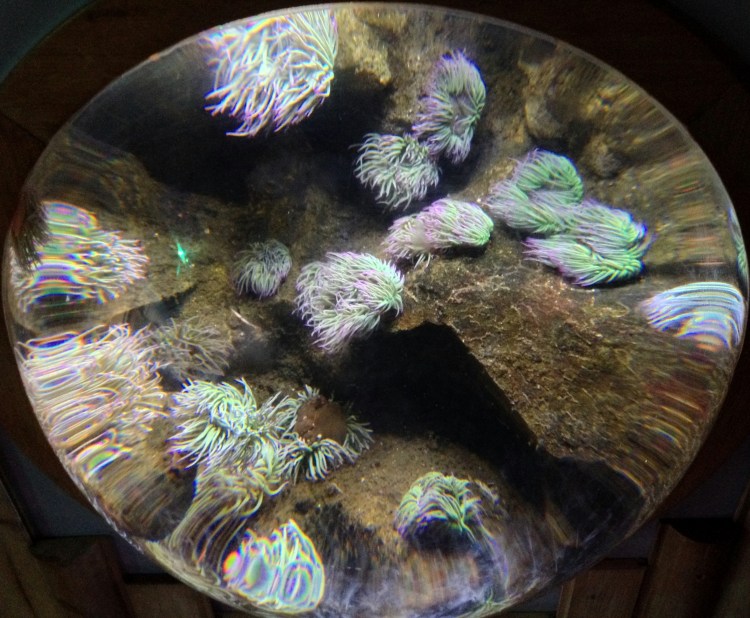




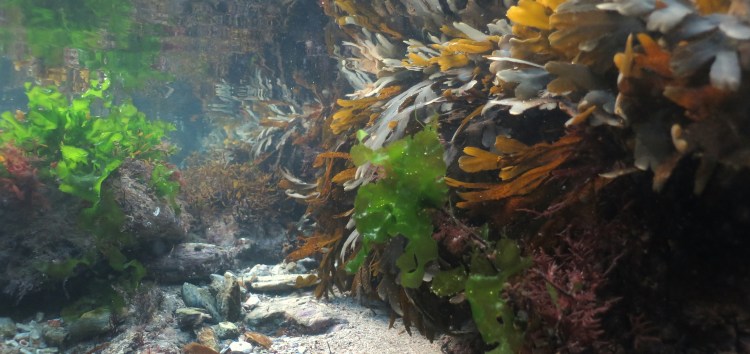








 Although all species were different (except for the Plumose anemones Metridium senile I saw on some pontoons), it was interesting to see the parallels with Cornish rock pools. For instance, all seaweed colours, shapes and textures I knew from home were present here, just in different combinations in each species. There were noticeable differences too. For one, many of the American organisms (chitons, isopods, anemones) are much bigger. The rocks were almost completely covered in barnacles and mussels (again both huge). Seagrass (Phyllospadix) was growing from the rocks!
Although all species were different (except for the Plumose anemones Metridium senile I saw on some pontoons), it was interesting to see the parallels with Cornish rock pools. For instance, all seaweed colours, shapes and textures I knew from home were present here, just in different combinations in each species. There were noticeable differences too. For one, many of the American organisms (chitons, isopods, anemones) are much bigger. The rocks were almost completely covered in barnacles and mussels (again both huge). Seagrass (Phyllospadix) was growing from the rocks!



